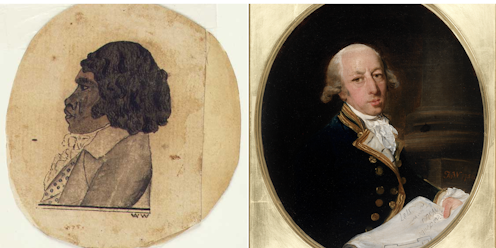wrestling with our historical assumptions through the entangled lives of two very different men
- Written by Anna Clark, Professor in Public History, University of Technology Sydney

Despite the inherent chance and coincidence of Australian history, there’s a certain sense of inevitability when we trace our national narrative in hindsight. The sequence of chapters in our textbooks and syllabuses seems logical and coherent. Colonisation follows European imperialism and exploration. Suffrage follows the discovery of gold. Federation is realised after a growing national consciousness.
There’s a reason historians construct timelines: drawing a thread between moments turns the past into a sequence that forms the skeleton of our stories. We make narratives out of stuff that happened over time.
Review: Bennelong & Phillip: A History Unravelled – Kate Fullagher (Simon & Schuster)
That form of chronological sequencing isn’t innate, however. Western historical practice feels natural because it’s the way many of us have learnt history. The discipline is presented and understood “chronologically” – but its intrinsic nature belies the attention required to craft and curate a seamless logic of time.
As postcolonial scholars such as Dipesh Chakrabarty and Priya Satia[1] have shown, the discipline of history itself has helped fashion a sense of inevitability, especially in histories of colonisation and imperial expansion. Indigenous histories and perspectives have often been relegated to the fringes of national narratives or framed in predictable tropes that saw them overwhelmed by historical “progress”.

















